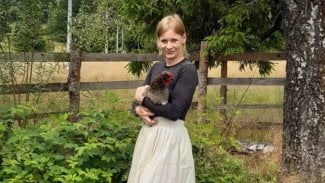queue
NAME
SYNOPSIS
DESCRIPTION
These macros define and operate on three types of data structures:
lists, tail queues, and circular queues.
All three structures support the following functionality:
- t
Insertion of a new entry at the head of the list.
t
Insertion of a new entry after any element in the list.
t
Removal of any entry in the list.
t
Forward traversal through the list.
Lists are the simplest of the three data structures and support
only the above functionality.
Tail queues add the following functionality:
- t
Entries can be added at the end of a list.
- t
All list insertions and removals must specify the head of the list.
t
Each head entry requires two pointers rather than one.
t
Code size is about 15% greater and operations run about 20% slower
than lists.
Circular queues add the following functionality:
- t
Entries can be added at the end of a list.
t
Entries can be added before another entry.
t
They may be traversed backwards, from tail to head.
- t
All list insertions and removals must specify the head of the list.
t
Each head entry requires two pointers rather than one.
t
The termination condition for traversal is more complex.
t
Code size is about 40% greater and operations run about 45% slower
than lists.
In the macro definitions,
is the name of a user defined structure,
that must contain a field of type
or
named
The argument
is the name of a user defined structure that must be declared
using the macros
or
See the examples below for further explanation of how these
macros are used.
LISTS
A list is headed by a structure defined by the
macro.
This structure contains a single pointer to the first element
on the list.
The elements are doubly linked so that an arbitrary element can be
removed without traversing the list.
New elements can be added to the list after an existing element or
at the head of the list.
A
structure is declared as follows:
LIST_HEAD(HEADNAME, TYPE) head;
where
is the name of the structure to be defined, and
is the type of the elements to be linked into the list.
A pointer to the head of the list can later be declared as:
struct HEADNAME *headp;
(The names
and
are user selectable.)
The macro
declares a structure that connects the elements in
the list.
The macro
initializes the list referenced by
The macro
inserts the new element
at the head of the list.
The macro
inserts the new element
after the element
The macro
removes the element
from the list.
LIST EXAMPLE
LIST_HEAD(listhead, entry) head;
struct listhead *headp; /* List head. */
struct entry {
...
LIST_ENTRY(entry) entries; /* List. */
...
} *n1, *n2, *np;
LIST_INIT(&head); /* Initialize the list. */
n1 = malloc(sizeof(struct entry)); /* Insert at the head. */
LIST_INSERT_HEAD(&head, n1, entries);
n2 = malloc(sizeof(struct entry)); /* Insert after. */
LIST_INSERT_AFTER(n1, n2, entries);
/* Forward traversal. */
for (np = head.lh_first; np != NULL; np = np->entries.le_next)
np-> ...
while (head.lh_first != NULL) /* Delete. */
LIST_REMOVE(head.lh_first, entries);
TAIL QUEUES
A tail queue is headed by a structure defined by the
macro.
This structure contains a pair of pointers,
one to the first element in the tail queue and the other to
the last element in the tail queue.
The elements are doubly linked so that an arbitrary element can be
removed without traversing the tail queue.
New elements can be added to the tail queue after an existing element,
at the head of the tail queue, or at the end of the tail queue.
A
structure is declared as follows:
TAILQ_HEAD(HEADNAME, TYPE) head;
where
is the name of the structure to be defined, and
is the type of the elements to be linked into the tail queue.
A pointer to the head of the tail queue can later be declared as:
struct HEADNAME *headp;
(The names
and
are user selectable.)
The macro
declares a structure that connects the elements in
the tail queue.
The macro
initializes the tail queue referenced by
The macro
inserts the new element
at the head of the tail queue.
The macro
inserts the new element
at the end of the tail queue.
The macro
inserts the new element
after the element
The macro
removes the element
from the tail queue.
TAIL QUEUE EXAMPLE
TAILQ_HEAD(tailhead, entry) head;
struct tailhead *headp; /* Tail queue head. */
struct entry {
...
TAILQ_ENTRY(entry) entries; /* Tail queue. */
...
} *n1, *n2, *np;
TAILQ_INIT(&head); /* Initialize the queue. */
n1 = malloc(sizeof(struct entry)); /* Insert at the head. */
TAILQ_INSERT_HEAD(&head, n1, entries);
n1 = malloc(sizeof(struct entry)); /* Insert at the tail. */
TAILQ_INSERT_TAIL(&head, n1, entries);
n2 = malloc(sizeof(struct entry)); /* Insert after. */
TAILQ_INSERT_AFTER(&head, n1, n2, entries);
/* Forward traversal. */
for (np = head.tqh_first; np != NULL; np = np->entries.tqe_next)
np-> ...
/* Delete. */
while (head.tqh_first != NULL)
TAILQ_REMOVE(&head, head.tqh_first, entries);
CIRCULAR QUEUES
A circular queue is headed by a structure defined by the
macro.
This structure contains a pair of pointers,
one to the first element in the circular queue and the other to the
last element in the circular queue.
The elements are doubly linked so that an arbitrary element can be
removed without traversing the queue.
New elements can be added to the queue after an existing element,
before an existing element, at the head of the queue, or at the end
of the queue.
A
structure is declared as follows:
CIRCLEQ_HEAD(HEADNAME, TYPE) head;
where
is the name of the structure to be defined, and
is the type of the elements to be linked into the circular queue.
A pointer to the head of the circular queue can later be declared as:
struct HEADNAME *headp;
(The names
and
are user selectable.)
The macro
declares a structure that connects the elements in
the circular queue.
The macro
initializes the circular queue referenced by
The macro
inserts the new element
at the head of the circular queue.
The macro
inserts the new element
at the end of the circular queue.
The macro
inserts the new element
after the element
The macro
inserts the new element
before the element
The macro
removes the element
from the circular queue.
CIRCULAR QUEUE EXAMPLE
CIRCLEQ_HEAD(circleq, entry) head;
struct circleq *headp; /* Circular queue head. */
struct entry {
...
CIRCLEQ_ENTRY(entry) entries; /* Circular queue. */
...
} *n1, *n2, *np;
CIRCLEQ_INIT(&head); /* Initialize the circular queue. */
n1 = malloc(sizeof(struct entry)); /* Insert at the head. */
CIRCLEQ_INSERT_HEAD(&head, n1, entries);
n1 = malloc(sizeof(struct entry)); /* Insert at the tail. */
CIRCLEQ_INSERT_TAIL(&head, n1, entries);
n2 = malloc(sizeof(struct entry)); /* Insert after. */
CIRCLEQ_INSERT_AFTER(&head, n1, n2, entries);
n2 = malloc(sizeof(struct entry)); /* Insert before. */
CIRCLEQ_INSERT_BEFORE(&head, n1, n2, entries);
/* Forward traversal. */
for (np = head.cqh_first; np != (void *)&head; np = np->entries.cqe_next)
np-> ...
/* Reverse traversal. */
for (np = head.cqh_last; np != (void *)&head; np = np->entries.cqe_prev)
np-> ...
/* Delete. */
while (head.cqh_first != (void *)&head)
CIRCLEQ_REMOVE(&head, head.cqh_first, entries);
CONFORMING TO
Not in POSIX.1-2001.
Present on the BSDs.
The
functions first appeared in
x 4.4 .



















